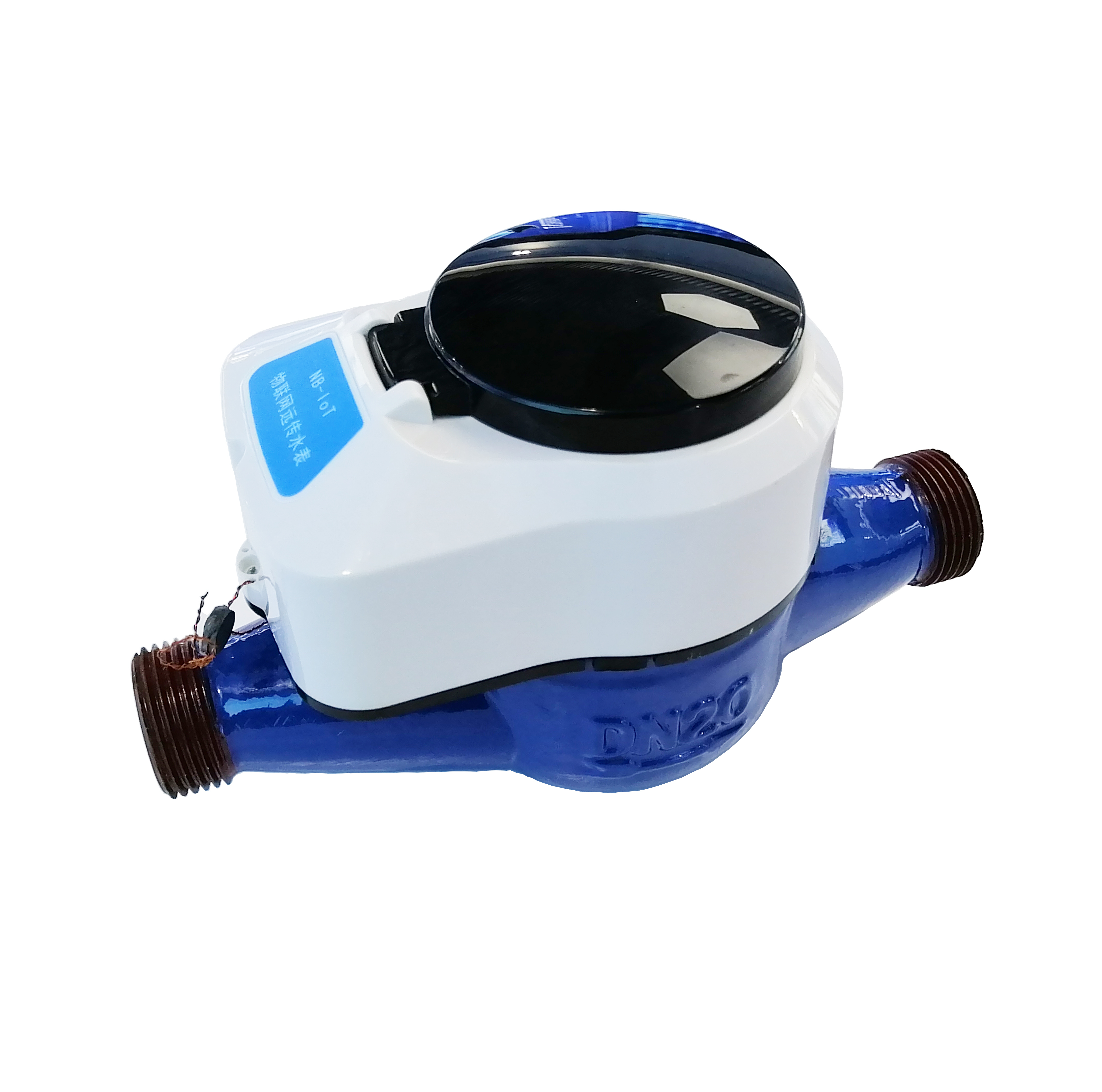

NB-IoT iot remote direct reading water meter (hereinafter referred to as iot water meter) is a remote water meter developed by our company for remote reading and control. Electronic reading using direct reading sampling technology as the basis, through NB-IoT network communication, to achieve the automatic remote transmission of the water used by the meter, effectively avoid the management department door reading meter, with valve control function (optional), convenient management department to control the water consumption of the meter, making remote reading and control more convenient and reliable. In saving manpower, material and financial resources at the same time, effectively improve the production efficiency, especially suitable for wiring difficulties in the wide area of sparse environment installation.
² Power supply battery: mainly used to store batteries for disassembly.
² Case: It is mainly used to install the metering and acquisition module, circuit board and valve-controlled motor in it.
² Photoelectric direct reading sampling module: mainly used for sampling metering data.
² Base table: mainly used to measure the current water consumption.
² NB-IoT communication module.
² Through hole ball valve (optional) : mainly under the control of the main circuit board, the tap water flowing through the table is closed and opened.
Technical characteristics
²The electronic reading of this product adopts direct reading sampling technology, and the reading accuracy can reach 100%.
² This product is provided with a through hole ball as a valve at the outlet end of the table body to reduce the impact of the valve on the measurement, this function is optional.
² The electronic reading device does not affect the measurement accuracy of the original primary instrument.
² Power supply battery independent, easy to disassemble and replace.
²Remote meter reading, valve control.
²Wireless, no wiring required.
²Large capacity data storage, recording equipment operation information and 3 years 1095 days of daily frozen data, including the daily maximum instantaneous flow, minimum instantaneous flow and alarm information, can provide a basis for disputes arising in the use of water meters.
² 8 years of communication charges: The table includes 8 years of communication charges.
Performance parameters:
² Ambient temperature: 0 ~ 50℃
² Fluid water temperature: 0+℃ ~ 30℃
² Pressure loss rating: ΔP63
² Working water pressure: ≤1M Pa
² Installation environment: Class B (no strong magnetic environment)
² Electromagnetic environment: E1
² Wireless mode: NB-IoT
² Direct read bits: 4 direct read bits
² Operating voltage: battery capacitor combination 3.0-3.6V
² Protection level: IP68
² Meets the technical requirements of GB/T778-2018 "Drinking cold water meter and hot water meter" and CJ/T224-2012 "Electronic remote Water meter".
Metrological parameter
² Range ratio:Q3/Q1≥100:1
² Precision level: Level 1
Nominal caliber(mm) | Overload flow Q4(m3/h) | Service flow Q3(m3/h) | Demarcation flow Q2(m3/h) | Minimum flow Q1(m3/h) |
DN15 | 3.125 | 2.5 | 0.05 | 0.0313 |
DN20 | 5 | 4 | 0.08 | 0.05 |
DN25 | 7.875 | 6.3 | 0.126 | 0.0788 |

NB-IoT iot remote direct reading water meter (hereinafter referred to as iot water meter) is a remote water meter developed by our company for remote reading and control. Electronic reading using direct reading sampling technology as the basis, through NB-IoT network communication, to achieve the automatic remote transmission of the water used by the meter, effectively avoid the management department door reading meter, with valve control function (optional), convenient management department to control the water consumption of the meter, making remote reading and control more convenient and reliable. In saving manpower, material and financial resources at the same time, effectively improve the production efficiency, especially suitable for wiring difficulties in the wide area of sparse environment installation.
² Power supply battery: mainly used to store batteries for disassembly.
² Case: It is mainly used to install the metering and acquisition module, circuit board and valve-controlled motor in it.
² Photoelectric direct reading sampling module: mainly used for sampling metering data.
² Base table: mainly used to measure the current water consumption.
² NB-IoT communication module.
² Through hole ball valve (optional) : mainly under the control of the main circuit board, the tap water flowing through the table is closed and opened.
Technical characteristics
²The electronic reading of this product adopts direct reading sampling technology, and the reading accuracy can reach 100%.
² This product is provided with a through hole ball as a valve at the outlet end of the table body to reduce the impact of the valve on the measurement, this function is optional.
² The electronic reading device does not affect the measurement accuracy of the original primary instrument.
² Power supply battery independent, easy to disassemble and replace.
²Remote meter reading, valve control.
²Wireless, no wiring required.
²Large capacity data storage, recording equipment operation information and 3 years 1095 days of daily frozen data, including the daily maximum instantaneous flow, minimum instantaneous flow and alarm information, can provide a basis for disputes arising in the use of water meters.
² 8 years of communication charges: The table includes 8 years of communication charges.
Performance parameters:
² Ambient temperature: 0 ~ 50℃
² Fluid water temperature: 0+℃ ~ 30℃
² Pressure loss rating: ΔP63
² Working water pressure: ≤1M Pa
² Installation environment: Class B (no strong magnetic environment)
² Electromagnetic environment: E1
² Wireless mode: NB-IoT
² Direct read bits: 4 direct read bits
² Operating voltage: battery capacitor combination 3.0-3.6V
² Protection level: IP68
² Meets the technical requirements of GB/T778-2018 "Drinking cold water meter and hot water meter" and CJ/T224-2012 "Electronic remote Water meter".
Metrological parameter
² Range ratio:Q3/Q1≥100:1
² Precision level: Level 1
Nominal caliber(mm) | Overload flow Q4(m3/h) | Service flow Q3(m3/h) | Demarcation flow Q2(m3/h) | Minimum flow Q1(m3/h) |
DN15 | 3.125 | 2.5 | 0.05 | 0.0313 |
DN20 | 5 | 4 | 0.08 | 0.05 |
DN25 | 7.875 | 6.3 | 0.126 | 0.0788 |